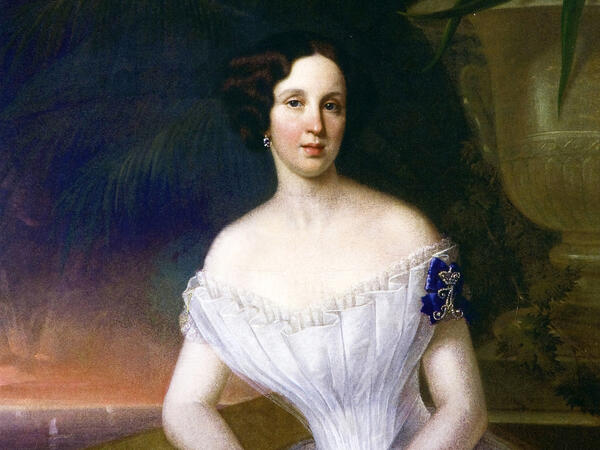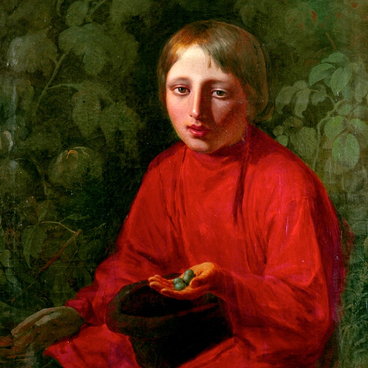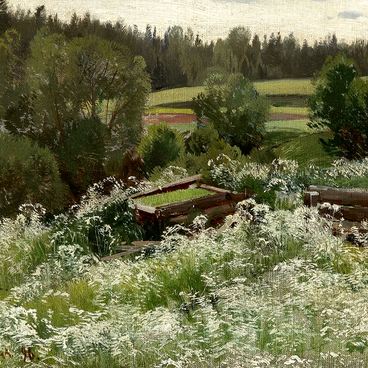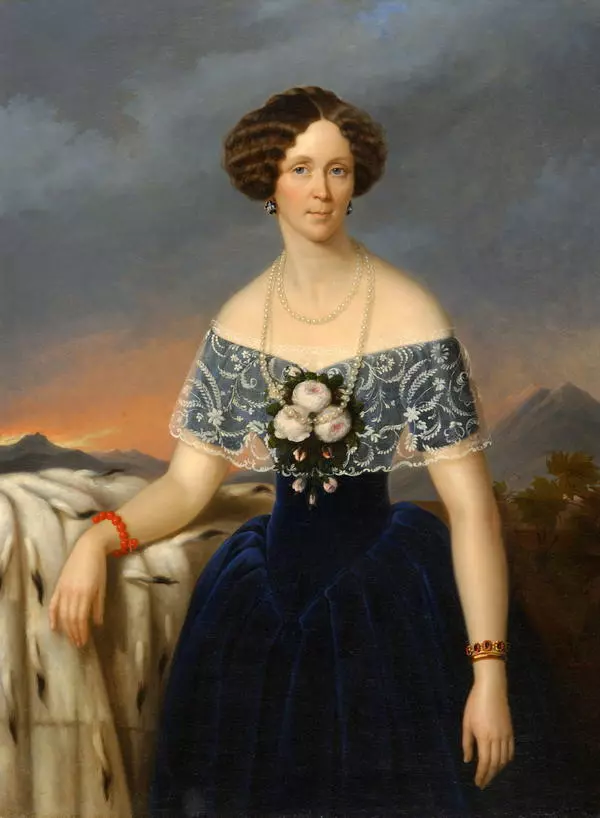A portrait was called ceremonial, which was typical for court culture — the artists not only conveyed the external resemblance to the model but also glorified it. In such portraits, noble people usually looked like monarchs, while monarchs were likened to gods of Ancient Greece.
The collection of the Chelyabinsk State Museum of Fine Arts contains the ceremonial portrait of a maid of honor painted by Gavriil Yakovlev. He was born in 1820 in the Chukhloma District of the Kostroma Governorate. Yakovlev received his primary art education in the classes of the St. Petersburg Bourgeois Society then studied at the Imperial Academy of Arts as a non-matriculated student.
For the portrait of an old man, painted from life, Yakovlev received the title of a free non-class artist of portrait painting from the Academy of Arts. After graduating from the Academy, for several years he could not get a job in the capital. In the fall of 1842, he began to teach drawing and sketching at the St. Petersburg Vladimirsky District School. He served as a teacher for only four years, then resigned and painted only. In 1853, for the portrait of Professor Fyodor Bruni, Yakovlev was awarded the title of academician.
Many famous persons of that time posed for him. Yakovlev created commissioned portraits of members of the Russian imperial family and court retinue, representatives of the noble and merchant classes, military senior officers, and their wives. The ‘Portrait of a Maid of Honor’ depicts a beautiful lady — a young woman in a light fluffy dress with a maid of honor bow made of a blue moire ribbon with a diamond monogram of Empress Alexandra Feodorovna, wife of Nicholas I.
A maid of honor was the junior female court title in post-Petrine Russia (1725–1730, the period after the death of the first Russian emperor Peter I). The title was given since 1744 to unmarried representatives of noble families. The maids of honor were the retinue of empresses and grand duchesses. In the list of ranks, maid of honors were described after the senior ranks: maids of the bedchamber and ladies of the suit. About a third of the maids of honor belonged to noble families; about half of them were the daughters of councilors and court officials.
Annually, the list of maids of honor was published in the address-calendar of the Russian Empire, which was a special book that included a list of all provincial and district government agencies. The list was made according to the term of service in the position of a lady-in-waiting.
The collection of the Chelyabinsk State Museum of Fine Arts contains the ceremonial portrait of a maid of honor painted by Gavriil Yakovlev. He was born in 1820 in the Chukhloma District of the Kostroma Governorate. Yakovlev received his primary art education in the classes of the St. Petersburg Bourgeois Society then studied at the Imperial Academy of Arts as a non-matriculated student.
For the portrait of an old man, painted from life, Yakovlev received the title of a free non-class artist of portrait painting from the Academy of Arts. After graduating from the Academy, for several years he could not get a job in the capital. In the fall of 1842, he began to teach drawing and sketching at the St. Petersburg Vladimirsky District School. He served as a teacher for only four years, then resigned and painted only. In 1853, for the portrait of Professor Fyodor Bruni, Yakovlev was awarded the title of academician.
Many famous persons of that time posed for him. Yakovlev created commissioned portraits of members of the Russian imperial family and court retinue, representatives of the noble and merchant classes, military senior officers, and their wives. The ‘Portrait of a Maid of Honor’ depicts a beautiful lady — a young woman in a light fluffy dress with a maid of honor bow made of a blue moire ribbon with a diamond monogram of Empress Alexandra Feodorovna, wife of Nicholas I.
A maid of honor was the junior female court title in post-Petrine Russia (1725–1730, the period after the death of the first Russian emperor Peter I). The title was given since 1744 to unmarried representatives of noble families. The maids of honor were the retinue of empresses and grand duchesses. In the list of ranks, maid of honors were described after the senior ranks: maids of the bedchamber and ladies of the suit. About a third of the maids of honor belonged to noble families; about half of them were the daughters of councilors and court officials.
Annually, the list of maids of honor was published in the address-calendar of the Russian Empire, which was a special book that included a list of all provincial and district government agencies. The list was made according to the term of service in the position of a lady-in-waiting.





